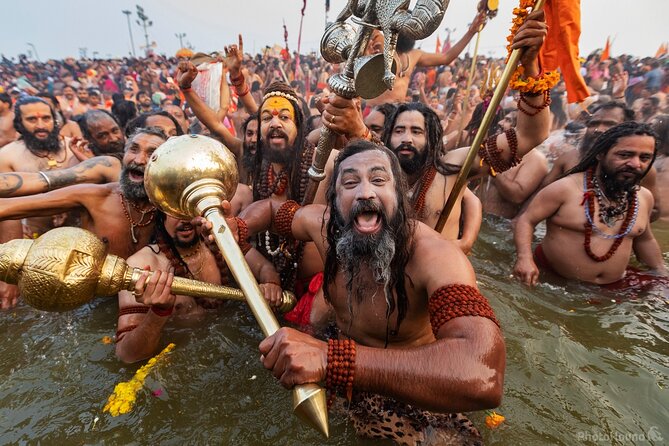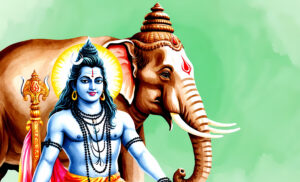Maha Kumbh Mela: A Spiritual and Cultural Extravaganza

The Maha Kumbh Mela is one of the largest and most significant religious gatherings in the world, attracting millions of devotees, saints, and tourists from across the globe. Held once every 12 years, it is celebrated at four sacred locations in India: Prayagraj (formerly Allahabad), Haridwar, Ujjain, and Nasik. The festival is a unique blend of spirituality, culture, and tradition that has been practiced for centuries, making it a profound and memorable experience for all those who partake in it.
What is the Maha Kumbh Mela?
The Maha Kumbh Mela is a sacred Hindu pilgrimage and a grand celebration that brings people together to bathe in the holy rivers of India—believed to wash away sins and bring spiritual salvation. The term “Kumbh” refers to a sacred pot that holds the nectar of immortality, and Maha Kumbh signifies the “Great Kumbh”—the largest and most auspicious of all Kumbh Mela celebrations. The festival is believed to have originated from a mythological tale in Hinduism where gods and demons fought for the nectar of immortality. During this battle, drops of nectar fell on four places in India, making these locations holy and significant for the Kumbh Mela.
The Four Locations of the Maha Kumbh Mela
The Maha Kumbh Mela takes place in four locations in India, each associated with a significant mythological story. These locations include:
- Prayagraj (Allahabad): The confluence of the Ganges, Yamuna, and Sarasvati rivers makes Prayagraj the most famous and sacred site for the Kumbh Mela. It is believed that a divine nectar fell here, making it the ultimate pilgrimage site.
- Haridwar: Located on the banks of the Ganges River, Haridwar is another key destination for the Maha Kumbh Mela. The Ganges here is considered purer and more sacred.
- Ujjain: Situated on the banks of the Shipra River, Ujjain is known for its unique temples and spiritual significance. It holds a special place in Hindu mythology, with the legendary Mahakaleshwar Jyotirlinga temple being a key attraction.
- Nasik: Nestled along the Godavari River, Nasik is famous for its association with the Hindu epic, the Ramayana. Pilgrims come to take a holy dip in the river, which is believed to cleanse their sins.
Why is the Maha Kumbh Mela Important?
- Spiritual Significance: The Maha Kumbh Mela holds immense spiritual importance for Hindus, as it is believed that bathing in the holy rivers during the mela can absolve one from sins and ensure liberation from the cycle of birth and death (moksha).
- Cultural Celebration: Apart from its religious significance, the Maha Kumbh Mela is a vibrant cultural event that showcases India’s rich traditions, rituals, and customs. Pilgrims, devotees, and tourists come together to witness grand processions, religious discourses, traditional music, and devotional dances.
- A Global Gathering: The Maha Kumbh Mela is not just a local or national event, but a global gathering. Pilgrims from all parts of the world make their way to India to partake in the spiritual practices and experience the energy and unity that the festival brings.
What to Expect at the Maha Kumbh Mela?
- Holy Dips: The central ritual of the Kumbh Mela is the holy dip in the river. It is believed that by immersing oneself in the river, a person’s soul is purified, and sins are washed away. During the Maha Kumbh, this ritual takes on even greater significance.
- The Naga Sadhus: One of the most fascinating aspects of the Kumbh Mela is the Naga Sadhus—naked ascetics who lead the procession during the Mela. These holy men are revered for their deep devotion and spiritual practices. Their presence adds to the unique atmosphere of the event.
- Religious Discourses and Rituals: Pilgrims and devotees engage in prayers, rituals, and spiritual discourses throughout the Mela. Renowned saints and gurus gather at the site to share spiritual wisdom with the masses.
- A Grand Procession: The Kumbh Mela sees a grand procession of saints, devotees, and pilgrims, often accompanied by music, chanting, and traditional dances. The spectacle is both awe-inspiring and humbling.
Best Time to Attend the Maha Kumbh Mela
The Maha Kumbh Mela is a multi-day event, typically spanning over a month. However, there are specific dates that are considered the most auspicious for taking a dip in the holy river. These dates are determined based on the alignment of the planets, and the most significant of these is known as the Shahi Snan (Royal Bath). The dates for the Shahi Snan vary, but they are always considered the most sacred during the Mela.
Conclusion: Experience the Divine Energy of Maha Kumbh Mela
The Maha Kumbh Mela is much more than a religious gathering; it is a global phenomenon that celebrates spirituality, unity, and tradition. With millions of people coming together to seek blessings, take a holy dip, and connect with their inner selves, it is an event like no other. Whether you are a devotee, a spiritual seeker, or simply a curious traveler, the Maha Kumbh Mela offers a transformative experience that stays with you long after the festival ends.
If you ever have the chance to witness this grand spiritual celebration, don’t miss the opportunity to be part of this unforgettable event. Immerse yourself in the divine energy of the Maha Kumbh Mela, and experience India’s spiritual heartbeat in all its glory!




